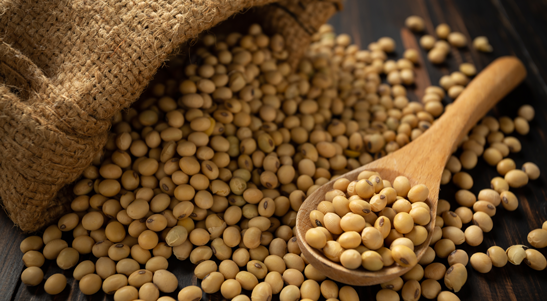 Image: Pixabay
Image: Pixabay
Soy has high nutritional value. Legume seeds contain approximately 38% of proteins, 20% of lipids (oil), 5% of minerals and 34% of carbohydrates. Despite their high nutritional value, seeds also contain some factors that can reduce their digestibility by monogastric animals, such as birds, pigs and humans.
{module Form RD}
According to data released by GDM, raffinose and stachyose are two types of soluble sugars present in soybeans, known as antinutritional factors. They are not digested by monogastric animals and when ingested from food made with soybean meal they cause gas, intestinal discomfort and reduce the energy in the food and weight gain.
As a way to solve this problem, the company developed soybeans with lower raffinose and stachyose contents using a gene editing technique, which was classified by CTNBio (National Technical Biosafety Commission) — an entity linked to the Ministry of Science, Technology, Innovations and Communication and responsible for implementing the National Biosafety Policy regarding Genetically Modified Organisms (GMOs) — as GMO-free. To obtain this soybean, a native soybean gene was altered. The new version of the protein of this gene resulted in the reduction of 75% of raffinose and 50% of stachyose in the seeds.
Per: Aline Merladete – AGROLINK












